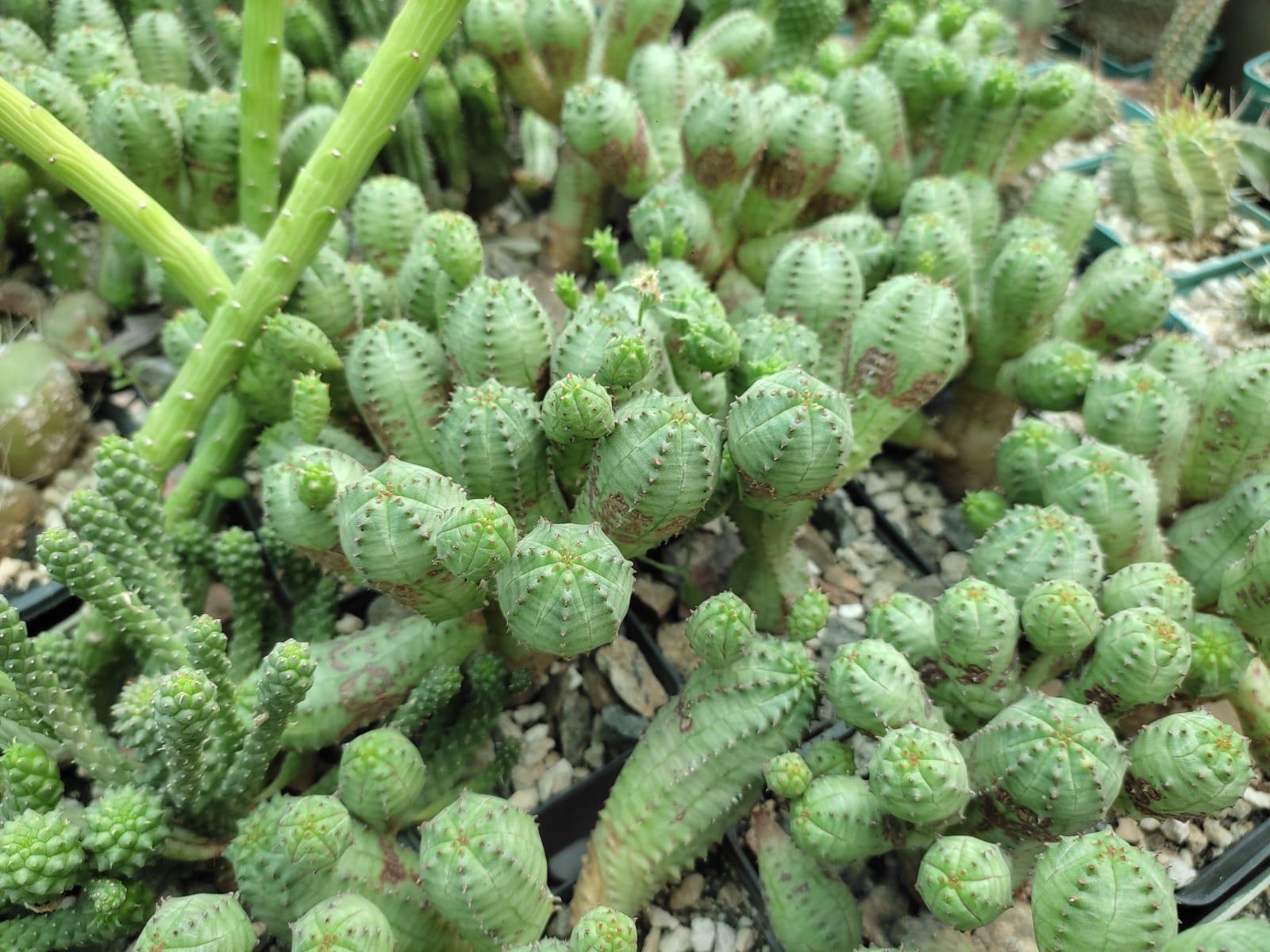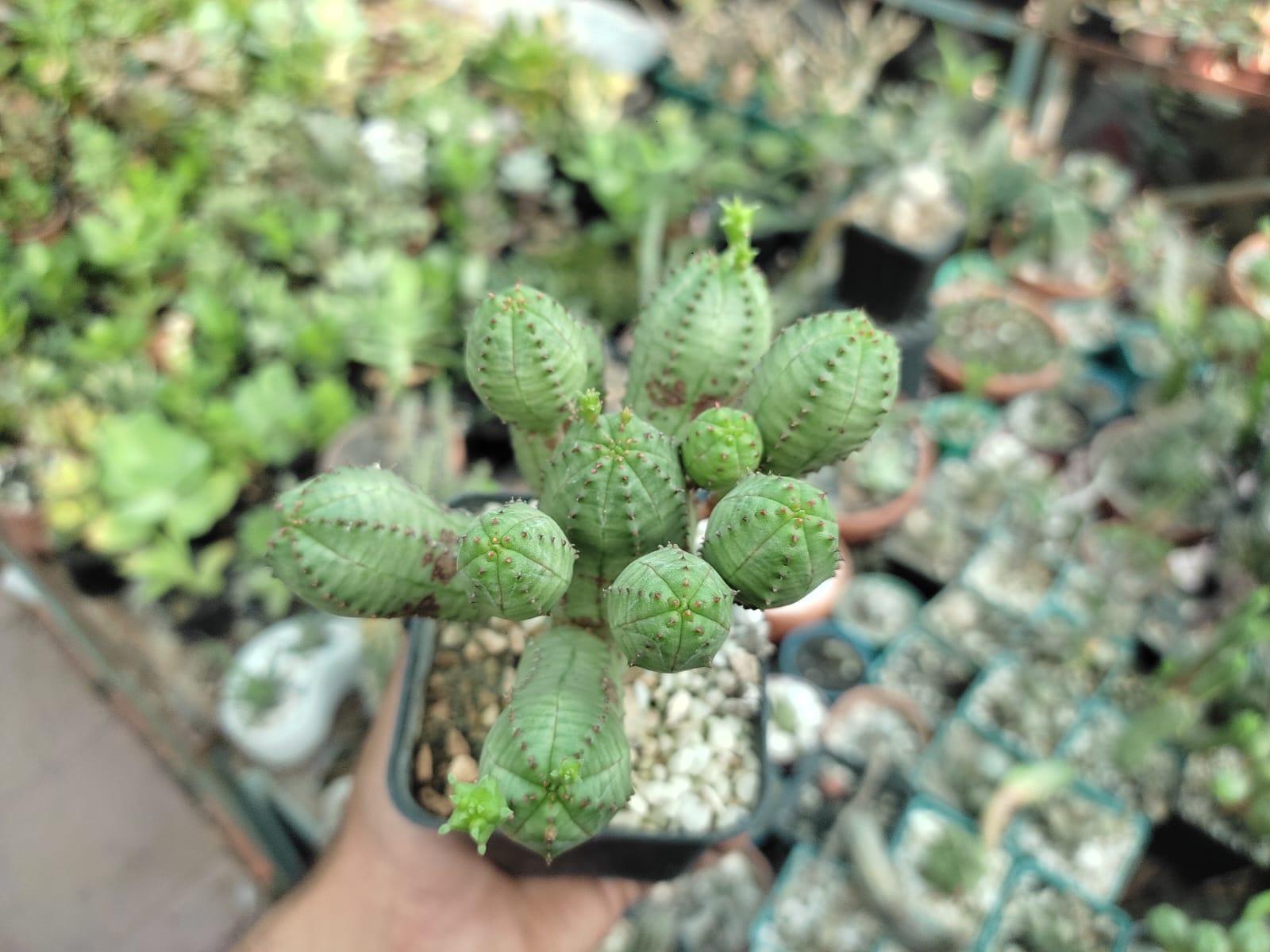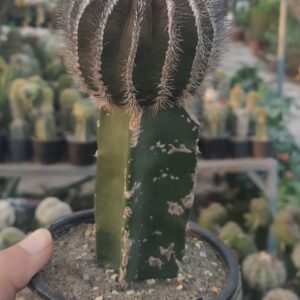Euphorbia Obesa: Unique and Exciting Barrel Cactus
Euphorbia obesa, commonly known as the baseball plant or African euphorbia, is a fascinating succulent native to South Africa. Due to its special barrel shape and striking appearance, this plant has attracted the attention of juice enthusiasts and collectors around the world. Whether you are an experienced gardener or just starting your plant journey, Euphorbia obesa is a great addition to your collection.
Appearance and Growth Habits
Euphorbia obesal has a unique spherical shape that resembles a baseball or a small barrel, giving it its common name. The plant usually reaches a height of about 15–30 cm (6–12 in) and can grow as wide. Its surface is covered with tubercles, which are small, fleshy projections that give the plant a textured appearance. The green body is often decorated with attractive creamy white lines that create a beautiful pattern.
This succulent plant is particularly notable for its showy flowers, which are small, yellow-green, and rise from the top of the plant. Although the flowers are not as showy as many other succulents, they add an interesting element to the overall aesthetic of the plant.
Ideal growing conditions
Euphorbia obesa thrives in bright, indirect light and tolerates direct sunlight, so it is suitable for both indoors and outdoors. It is important to ensure well-draining soil when growing this plant, as it is susceptible to root rot when it sits in water. A mixture of cactus or plant and sand or perlite is ideal to promote healthy growth.
Watering is essential for Euphorbia obesa, but careful management is essential. Allow the soil to dry out completely between waterings, usually every two to four weeks, depending on the season and humidity. Reduce watering even more during the winter months when the plant is dormant.
Euphorbia Obesa Propagation Tips
Propagation of Euphorbia obesa can be a gratifying endeavor, especially for succulent lovers looking to expand their collection. There are two main methods of propagation: cuttings and seeds. Here is a detailed overview of each method.
Propagation by displacement
Offsets, or natives, are small new plants that grow from the base of the parent Euphorbia obesa. They are the easiest and most reliable way to spread this deliciousness. Here’s how to do it:
Time: The best time to remove transitions is during the growing season, usually spring or early summer, when the plant is actively growing.
Removal of migration: Check the bottom of the plant carefully for migration. Using a clean, sharp knife or garden shears, carefully cut off the offset from the mother plant. Be sure to include some of the base and roots if possible.
Drying allowances: After removal, place them in a dry, shaded area for a few days. This drying time allows the formation of a callus on the cut surface, which is essential to prevent rot during transplanting.
Planting: Once the callus has formed, prepare a pot in well-draining soil such as cactus mix or potting soil and perlite or sand. Plant the offset into the soil, burying it just enough to support itself. Avoid watering immediately; wait about a week for the roots to take root before watering lightly.
Care: Place the newly planted offset in a location with bright indirect sunlight. Water sparingly until you see signs of new growth, indicating that the plant has successfully rooted.
Resistance to pests and diseases
One of the advantages of Euphorbia obesa is its natural resistance to pests and diseases. However, it is not completely immune. Watch out for common pests like mealybugs and aphids, which can sometimes infest succulents. If detected, treat the plant immediately with an insecticide or neem oil to prevent further damage.
Cultural Significance
Euphorbia obesa is not only valued for its unique appearance, but also has cultural significance in its natural habitat. In South Africa, this plant is sometimes called “doll’s eye” because of its spherical shape and is valued for its ornamental qualities. Its unique morphology and drought-tolerant nature make it an excellent choice for forestry, which promotes water conservation in horticulture.
Conclusion
In conclusion, Euphorbia obesa is an exciting succulent that adds uniqueness to any collection. With its unique shape, low maintenance and drought tolerance, the plant is perfect for beginners and experienced gardeners. Whether you’re looking to enhance your indoor space or create a stunning outdoor display, Euphorbia obesa is sure to be a conversation starter. Embrace this stunning succulent beauty and add South African charm to your home or garden today.
Checkout our Exotic plants collection here : https://boota.pk/exotic-plants/
To get more insight of your favorite plants visit our youtube channel : https://www.youtube.com/@boota4474








Reviews
There are no reviews yet.